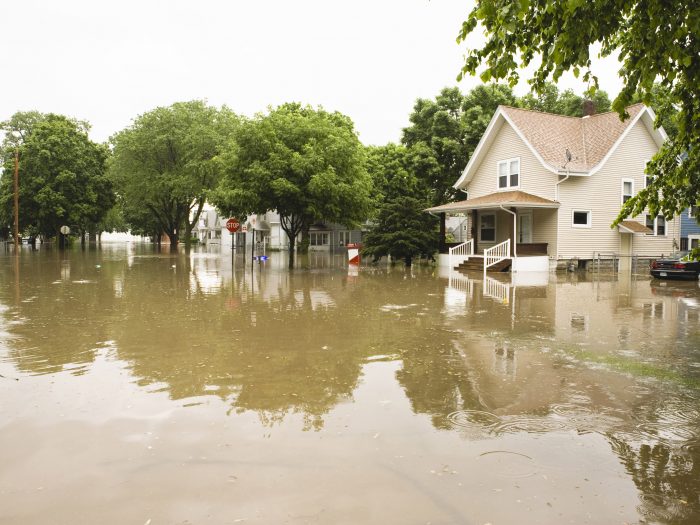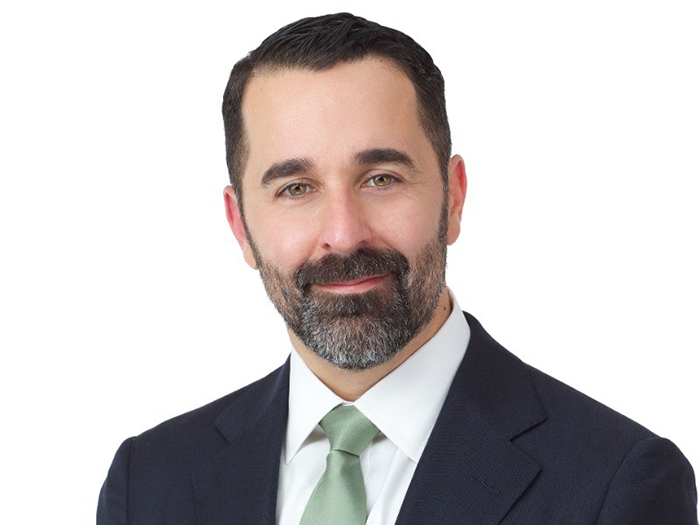Sponsored: Munich Re
How One Reinsurer Intends to Shrink the Growing Flood Risk Protection Gap

Flood is the most common and costly natural peril in the U.S.1 Over the last 40 years, inland flooding caused more than $151 billion in damages, which doesn’t include flooding related to hurricanes and tropical cyclones2. According to FEMA, 99% of all U.S. counties were impacted by flood between 1996 and 2019.
“We’re seeing a shift in climate patterns resulting in heavier and more prolonged inland rainfall — rain lasting up to 48 hours and dropping two or three inches — on regions that previously never experienced much rain,” said Sanjay Mehrotra, SVP and Underwriting Flood Manager for Munich Re US. “Of course, we’re continuing to see highly active hurricane seasons as well, with 12 named storms making landfall in 2020.”
Despite the prevalence of flood risk, only 5% to 15% of U.S. homeowners carry flood insurance. Among small- to mid-size business owners, the rate is below 5%. According to Ann Yachwak, SVP and Client Manager for Munich Re US, the protection gap has largely been due to a lack of affordable insurance solutions.
“Homeowner and small commercial insurers started excluding flood risk about 50 years ago, leaving the National Flood Insurance Program (NFIP) as the primary option for coverage. NFIP policies are expensive for low-moderate or non-flood zone risks. At the same time, the private insurance market overall remains uncomfortable with flood risk. That’s really what drives the protection gap,” she said.
Here are the main obstacles blocking growth in the private flood insurance marketplace and how insurers and reinsurers can help to close the protection gap.
A Black-and-White View of Risk Drives the Insurance Divide

Sanjay Mehrotra, SVP and Underwriting Flood Manager for Munich Re US
FEMA flood maps underlie many of the challenges facing private insurers. For one thing, their lack of granularity makes them an unreliable risk assessment tool. FEMA’s high hazard designation also remain the criteria against which flood insurance is made compulsory — which often leaves low to moderate risk regions exposed.
“Flood maps take a binary view of the risk. You are either in a high hazard zone and therefore are required to have flood insurance, or you are not, and the boundaries are somewhat arbitrary. One homeowner could be in high hazard zone, while his neighbor across the street is in a moderate zone. One must have insurance while it’s optional for the other, even though they ultimately have a similar exposure,” Mehrotra said.
Underwriters have a need for updated, detailed flood models to better quantify risk for individual locations. New models use hydrological techniques to evaluate exactly how excess water will flow around a given property depending on the surrounding terrain, topography and built environment. And these models can hone in on areas as small as 10 square meters.
However, these new flood models are still in their infancy and not publicly available for all insurers to use. FEMA flood maps, therefore, remain the default risk barometer.
“New entrants to the private flood insurance market are essentially competing against the NFIP for the same five million or so properties that are required to buy coverage,” Yachwak said. “Some innovative solutions have targeted properties in low to moderate risk zones, but convincing someone who does not adequately understand their flood exposure to buy an additional product on top of their existing policies is often a tough sell.”
How to Close the Gap: A Two-Pronged Approach

Ann Yachwak, SVP and Client Manager for Munich Re US
Closing the flood risk protection gap will require increasing the availability and uptake of insurance solutions, while minimizing loss through proactive risk mitigation.
On the insurance front, Mehrotra and Yachwak say that flood coverage requirements based on FEMA’s risk stratifications should be a thing of the past.
“Roughly 20% of NFIP claims come from areas classified as low to moderate risk. The truth is, everyone lives in the flood zone,” Mehrotra said. “Large commercial carriers often already include flood coverage in commercial packages, and the same should be true for standard BOPs and homeowner’s or renter’s insurance. Flood coverage should be standard across the board.”
ISO recently developed rates, rules, and forms for flood coverage as a component of commercial package policies. Though uptake has been slow among carriers, this does help pave the way for potential new entrants.
Some states are actively trying to open up the market. New Jersey, for example, has lowered the barrier to entry by requiring that insurers file rates but waived the need for approval. In other states like Texas, the excess and surplus marketplace has stepped in to fill a need where primary insurers don’t yet have an appetite.
“We are starting to see more and more flood coverage options emerge,” Yachwak said.
But increasing these options alone is not enough. The protection gap can also be tightened by reducing losses in the first place with mitigation efforts.
“Communities should re-evaluate their building codes every few years. New structures may need to be built at higher elevations or make use of more resilient materials. In general, any new construction should consider its impact on the rest of the environment. How will the structure change the topography, the availability of natural drainage, and the way water might flow in a flooding event?” Mehrotra said.
In addition, existing properties should look for temporary flood barriers that could be erected before a storm. When Hurricane Harvey made landfall, such barriers saved many Houston homeowners from severe damage. “Property owners can consult organizations like the Insurance Institute for Business & Home Safety (IBHS), as they provide a lot of resources and guidance on how to make buildings more resilient,” Mehrotra said.
Communities can also reduce their exposure by increasing natural drainage through establishment of parks and green spaces, planting trees, and building reservoirs or ponds that can hold extra water.
Leading the Way in Flood Risk Management
Right now, reinsurers have a bigger appetite for flood risk than primary carriers, and they are leading the way in developing more advanced models to better understand this evolving risk and raising exposure awareness among both insurers and insureds.
“We are trying to shine a light on this risk and help people see the value of flood insurance,” Yachwak said. “Most flood events are not total losses. For instance, most homeowners and small business owners may just need a limited amount of coverage to adequately cover basement contents. We’re trying to raise awareness that it doesn’t have to be a high-limit policy and that coverage does not have to be expensive to provide adequate protection.”
Case in point: The Munich Re US dedicated strategic projects team — which develops solutions to meet risks emerging over the next three to five years — created a white labeled inland flood endorsement for both homeowners and small commercial risks. Thirty-five primary carriers now offer that product to more than 50,000 insureds.
“Those 50,000 policyholders are property owners who previously had not seen or understood the need for flood insurance. So that endorsement is covering risks outside the NFIP’s target market and making a meaningful difference in closing the protection gap,” Yachwak said.
Munich Re’s Incubator team in the U.S. — its innovation arm — is also working with top engineering firms, hydrologists, meteorologists and flood modeling companies to create a comprehensive risk assessment tool for large commercial real estate investment companies, which will “allow risk managers of large portfolios to quantify flood risk in 5, 10, 50 years down the road, and come up with some targeted techniques to mitigate future flood losses,” Mehrotra said.
“We are heavily invested in helping our clients understand, mitigate and insure this risk as it continues to evolve and as we work together to close the flood protection gap,” he said.
To learn more about Munich Re US’ comprehensive U.S. flood strategy and white-label flood insurance products, visit: https://www.munichre.com/us-non-life/en/solutions/reinsurance/products/flood.html.
Source:
1FEMA. 2021. Fact Sheet: Myths and Facts About Flood Insurance. https://www.fema.gov/press-release/20210318/fact-sheet-myths-and-facts-about-flood-insurance
2NOAA National Centers for Environmental Information (NCEI). 2021. U.S. Billion-Dollar Weather and Climate Disasters (2021). https://www.ncdc.noaa.gov/billions/, DOI: 10.25921/stkw-7w73
This article was produced by the R&I Brand Studio, a unit of the advertising department of Risk & Insurance, in collaboration with Munich Re. The editorial staff of Risk & Insurance had no role in its preparation.










